A research probe into how human centered design and technology could help positively impact colorectal cancer procedures.
The use of artificial intelligence within the operating theatre will start to become more common practice in the coming years. New software is being developed to act as a confirmatory ‘surgical companion’ to aid in the characterisation of tissue in situ in colorectal procedures. In the diagnosis of tissue, the system will aid the surgeon in locating the optimal biopsy area so that an effective biopsy can be taken. Then in the removal of cancer, it will aid the surgeon in locating the optimal resection area to ensure a healthy anastomosis can be performed. With the overall main goal of a better patient outcome.
The aim of this project was to act as an initial research probe into this technology, taking a human centered design approach, to explore how the surgeon’s could interact with a system like this. The two main goals were to: firstly, develop a user interface that could display the decision made by the AI algorithm in an understandable way so that the surgeon could enact on it and secondly, develop a standardised workflow for the biopsy, excision and anastomosis procedures as the key theme in this field is a lack of standardisation. The final design of the system has been developed to be controlled by gestural inputs. In a real world scenario, there would be an accompanying manual input.
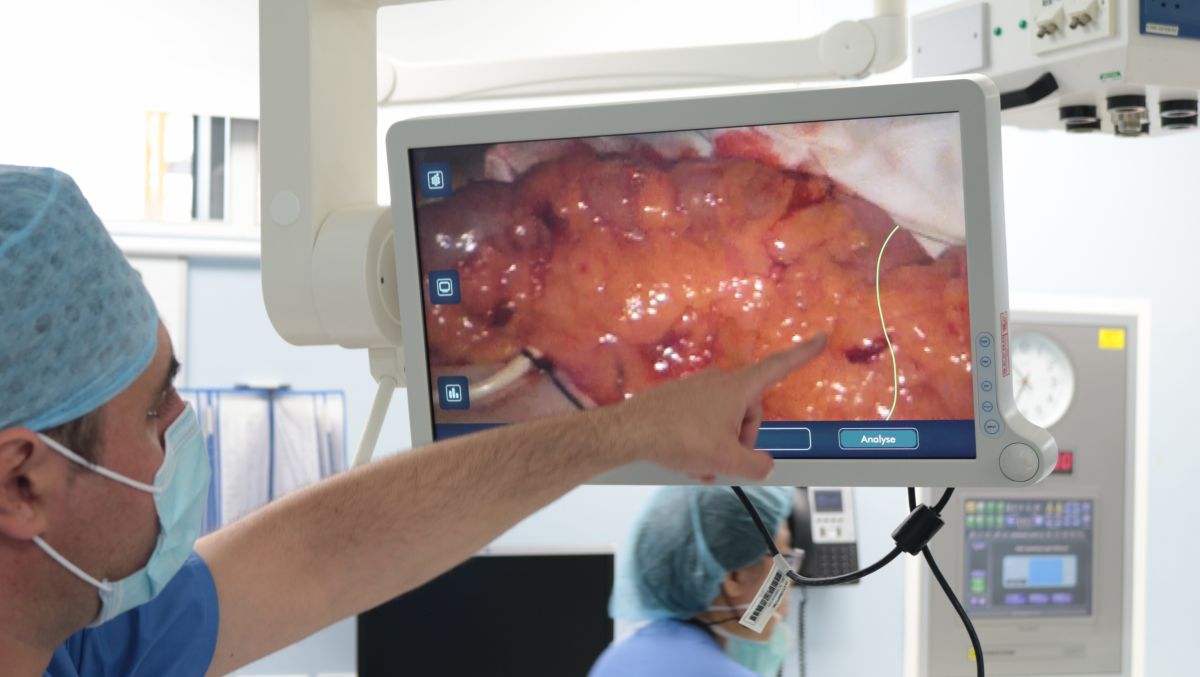
Project Hero Image
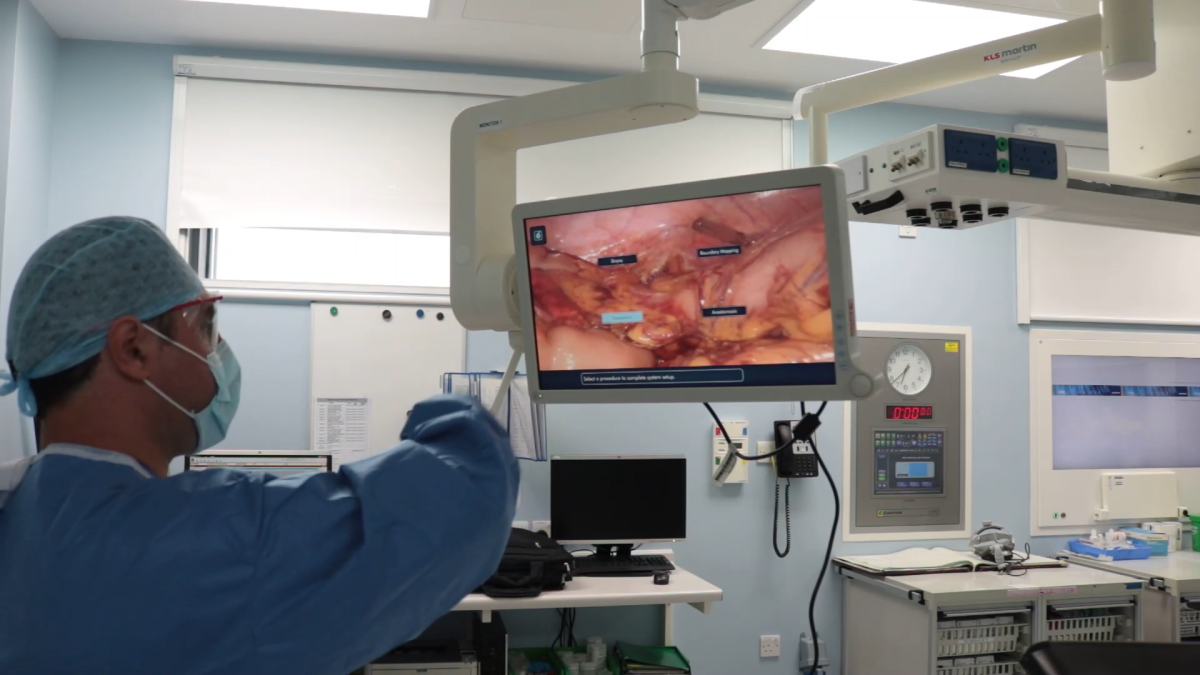
Procedure Selection
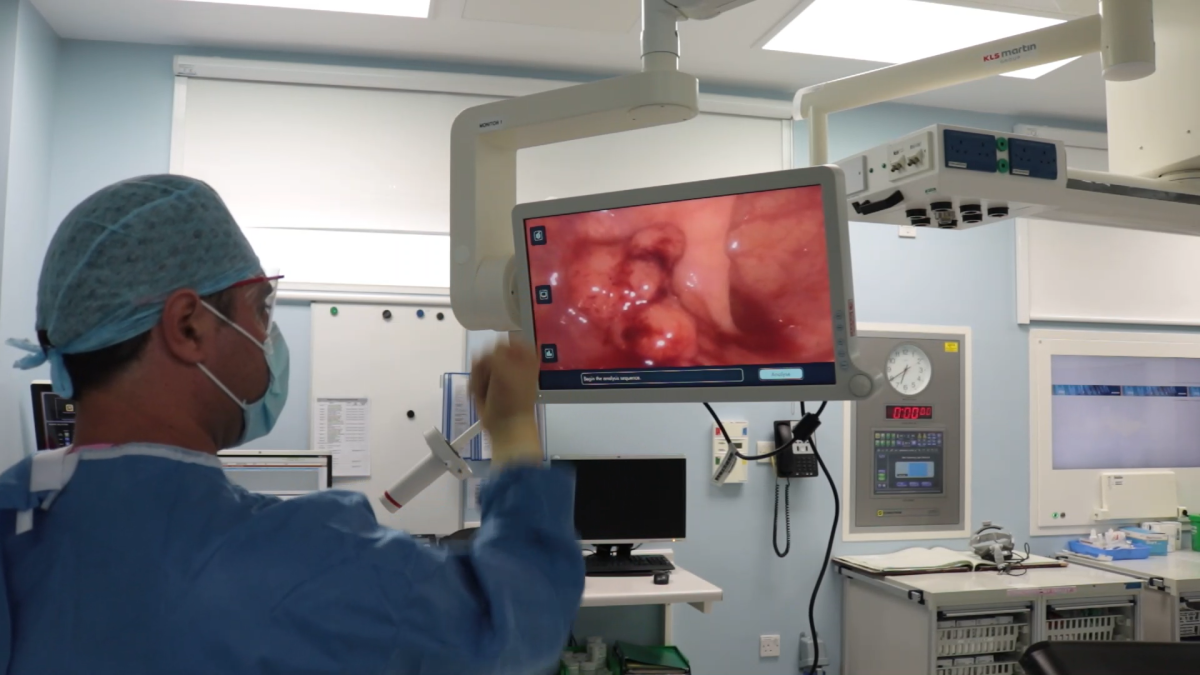
Analysis Initiation
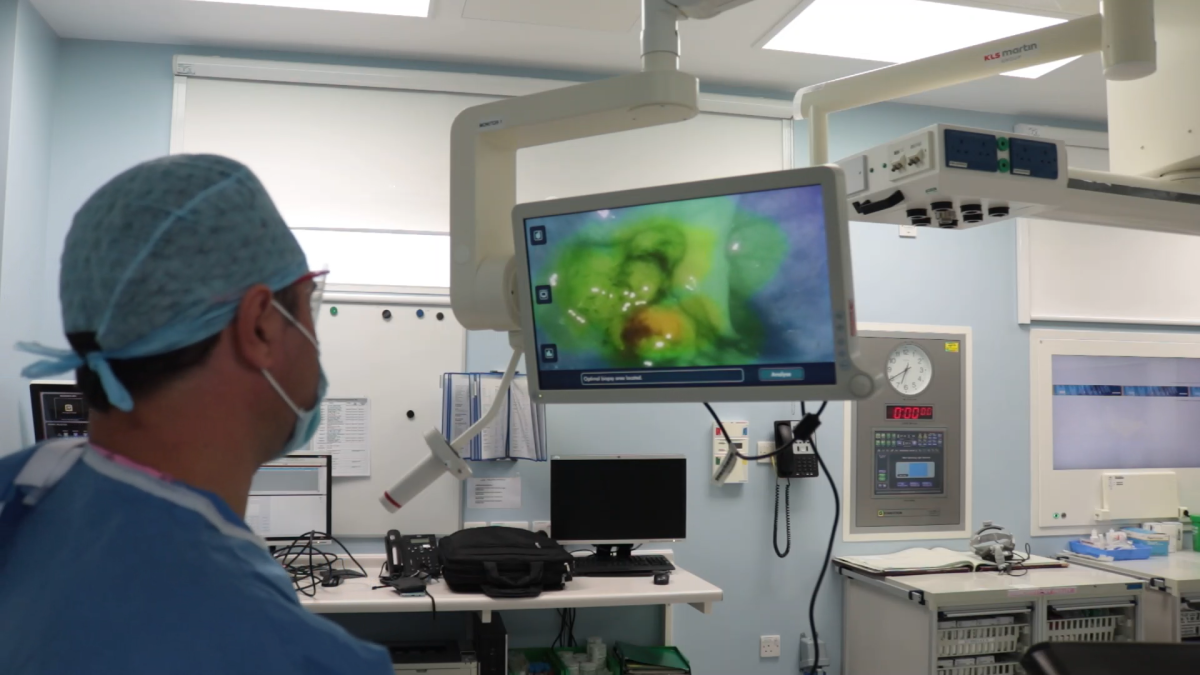
Biopsy Probability Map
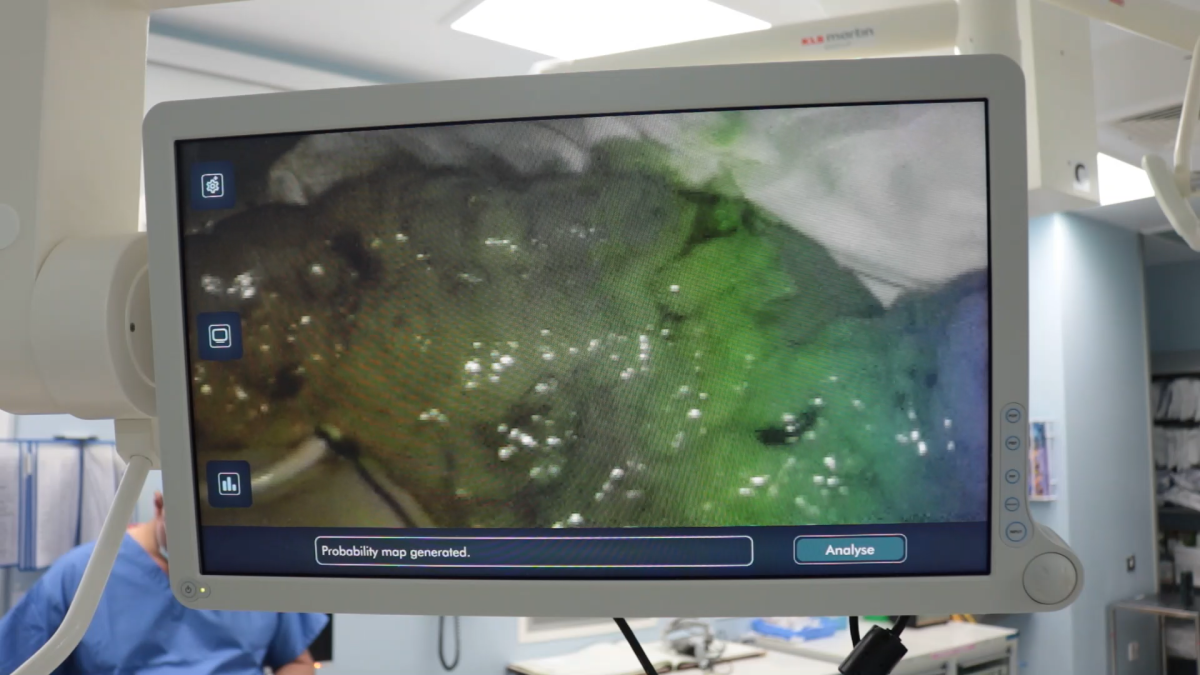
Anastomosis Probability Map
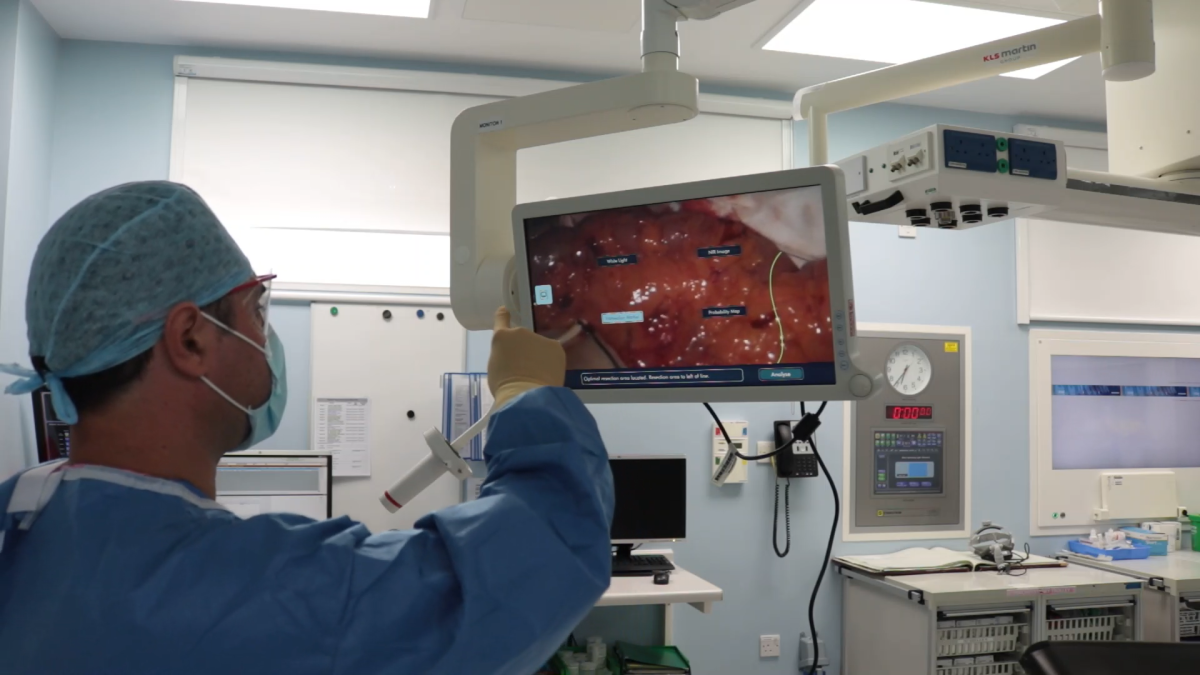
Screen Selection
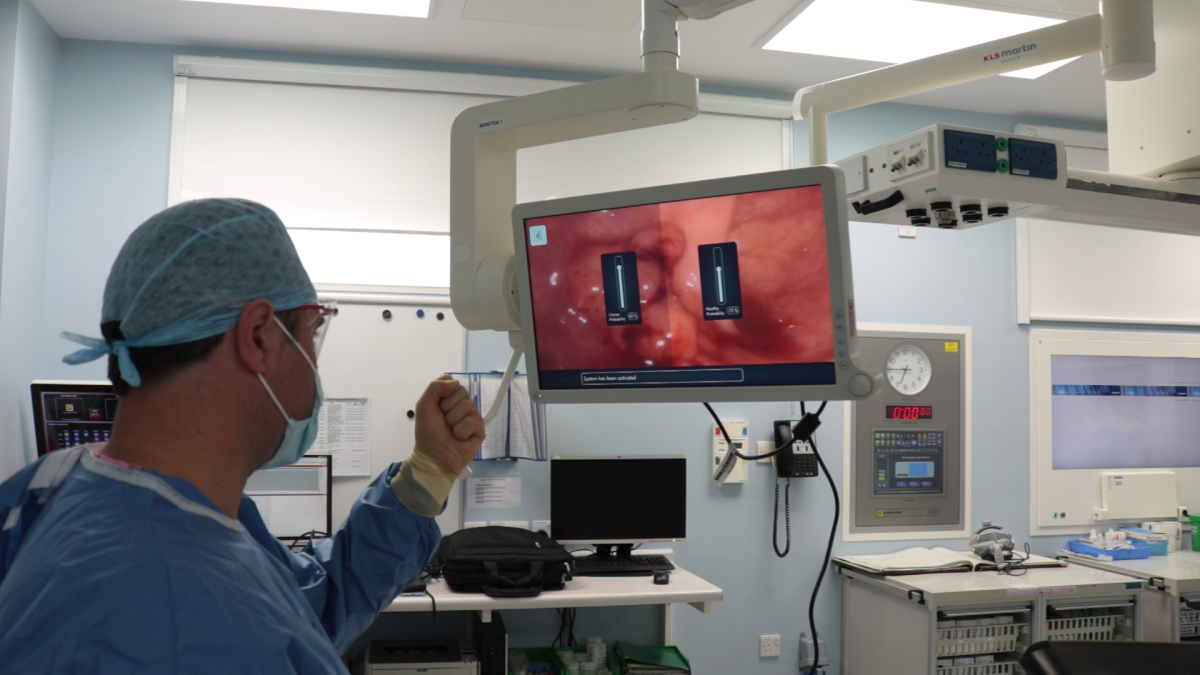
Advanced Settings - Threshold Control
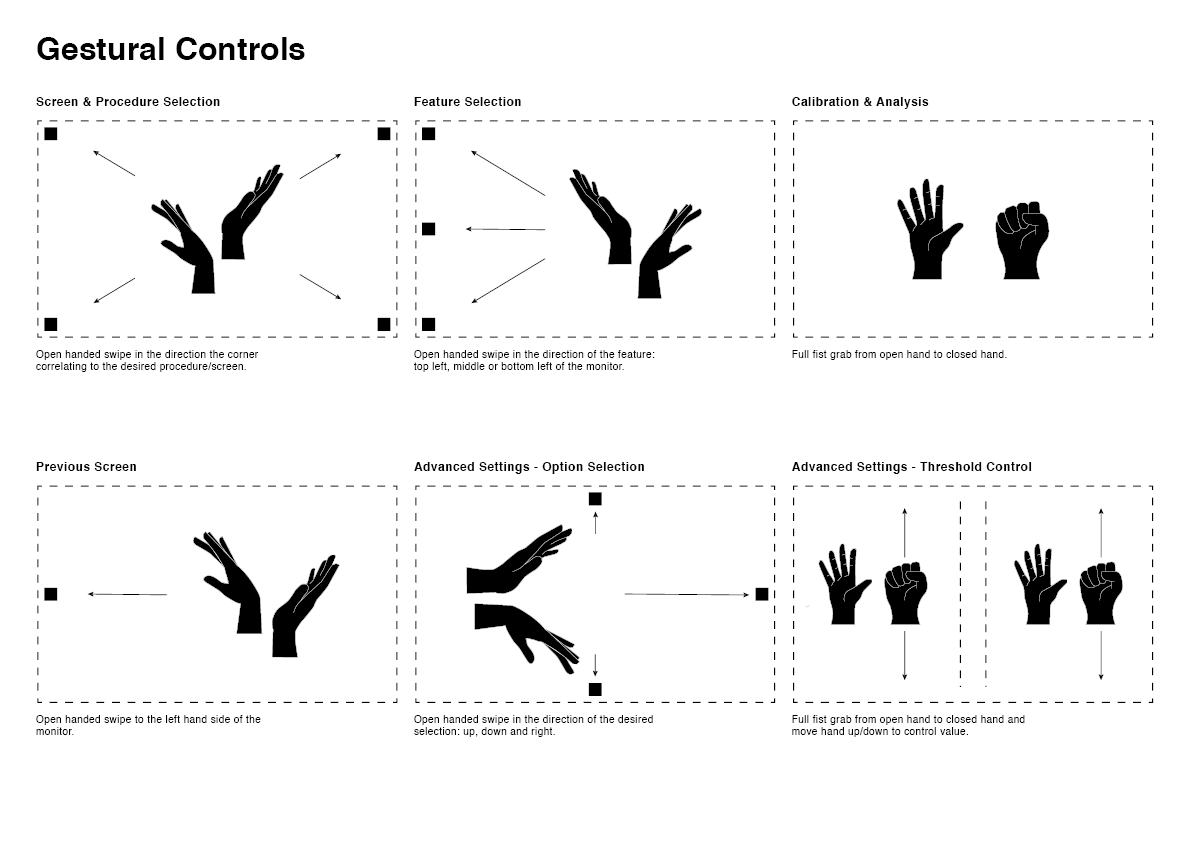
Gesture Controls